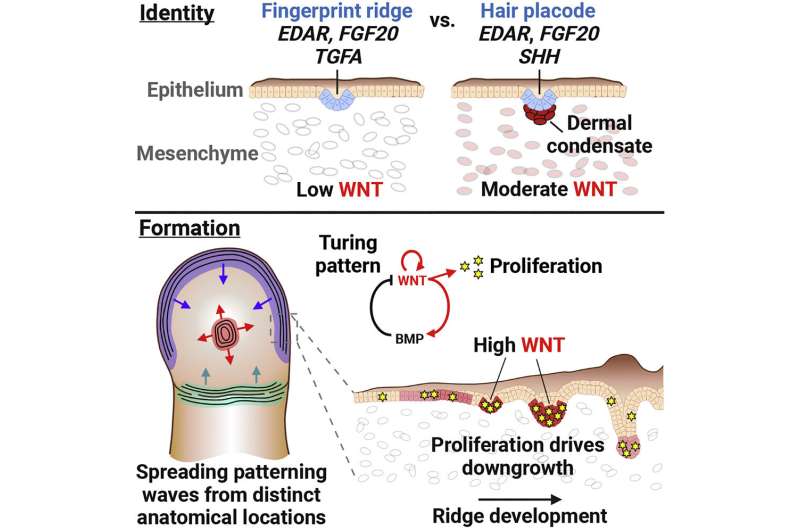February 10, 2023 report
This article has been reviewed according to Science X's editorial process and policies. Editors have highlighted the following attributes while ensuring the content's credibility:
fact-checked
peer-reviewed publication
trusted source
proofread
How fingerprints get their unique whorls

An international team of scientists with a myriad of backgrounds has revealed the process by which unique fingerprints develop. In their research, published open access in the journal Cell, the group studied the development of fingerprints in mice and humans.
Prior study of fingerprints has shown that their purpose is to provide added grip and to enhance sensitivity. Scientists and lay people alike have known for a long time that in humans, they are unique—even identical twins have different prints. Why this is the case has remained a mystery. In this new effort, the researchers have solved the mystery.
To better understand how fingerprints develop and why they differ between people, the group tracked their formation in fetal mice and studied the genetics behind their development. They found what is known as a Turing reaction-diffusion system.
Back in the 1950s, Alan Turing proposed a development process by which leaves grow in unique arrangements. He suggested that some molecules in a developing system promote cell growth while others actively work to prevent growth. The result was two forces acting against one another on adjoining cells. That led to the creation of ridges, which led to unique formations, such as stripes on a zebra or whorls on fingertips.
By watching as fingerprints developed on fetal mice (and human cells in a petri dish), the researchers could see that ridges developed and worked against one another in three different parts of the end of the finger—the tip, the center, and the part closest to the top knuckle. As different cell groups pushed against one another relative to their physical location, whorl patterns emerged.
The random placement of the fingers in the womb as the cells push against one another to form ridges is what makes the patterns so random. And that is why even identical twins have different prints. The team also found that the initial stages of fingerprint development were nearly identical to those of hair follicles. The only difference was that with hair follicles, cells deeper below the skin surface were involved in the process.
More information: James D. Glover et al, The developmental basis of fingerprint pattern formation and variation, Cell (2023). DOI: 10.1016/j.cell.2023.01.015
Journal information: Cell
© 2023 Science X Network





















